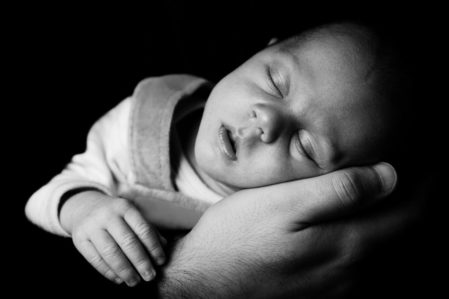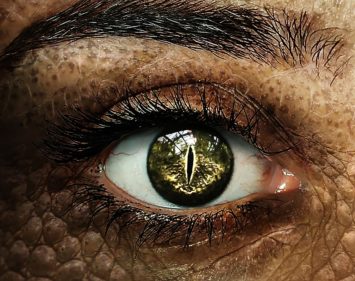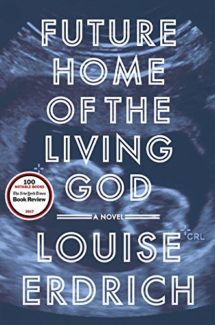Apocalypse, Dystopia, and the Love of a Mother
Author: Louise Erdrich
With the eerie haziness of The Handmaid’s Tale, Future Home of the Living God explores the rapid devolution from normal into dystopian crises through the eyes of a disturbed pregnant woman. Cedar Hawk Songmaker starts the narrative, journaling to her as yet unborn child as she watches the world around her rescind and reform. Evolution is reversing itself – no one knows why – and contemporary species are rapidly reverting to their primordial forms. Humans are no exception and more and more, babies born exhibit some incomplete genetic makeup that marks ill-formed Neanderthals in the making . . . or the mothers die in agonizing, failed pregnancies.
As governments and societies rapidly collapse, the surviving fringe watches the scaled dinosaur birds in the trees and turns inward toward an incipient religious frenzy. A new, temporary, world order forms; in a desperate effort to save an inexplicably dying planet, the only thing left is pregnant women and the hope – and fear – they carry inside them. If one baby is born, one that is as they all were before, then there is a potential to discover and reverse the effects, or at least sustain the human race through the few babies born unaffected. At first, the pregnant are rounded up. Then, just the fertile women locked into hospitals, sought for experiments and salvation, and eventually discarded, falling into a mysterious wayside of medical waste, ambient rumors, and failed hopes. Through all this, Cedar must protect her infant, hide from informants and crazed neighbors seeking a reward, maintain a destabilizing relationship with her unborn child’s father, search her own faith, and create a relationship with her Ojibwe birth mother and tribe. In the end, hope is just as unsustainable as fear.
Atmospheric and surreal, Future Home of the Living God immediately captures the indefinable essence of fear and temporality. This is mostly enhanced by the fact that answers aren’t part of the equation and even the terrifying changes of a surrounding world take a backseat to the emotional fervor and confusion of our narrator. Cedar dominates our world, her voice ranging from dreamy denial to paranoia to frantic, clawing, murderous hope. The entire spectrum of the event is through her eyes and emotions and the details – what these new babies look like, what the world outside her window now looks like, what the government is really doing with the women, and of course the ultimate, unknowable explanation – are sparse. In this way, what isn’t pictured becomes more legendary, readers’ minds and the occasional hints – chicken noodle soup which now has the occasional tough scale floating along its shimmering surface – painting a world all the more vivid for its understated nature. Of course… we kind of want to see a dinosaur, but that’s not the point and certainly not in the cards for Erdrich’s piece.
 Cedar is complicated, sometimes downright weird, and always contradictory. She writes for a Catholic magazine and has found religion, to her liberal adoptive mother’s chagrin, and yet she is distinctly separated from what you see as a traditional prospective. This is a hint in and of itself that Cedar only marches to one tune – her own. Unfortunately, bravery becomes equal part stupidity as Cedar endangers herself, her child, and her family by deciding to locate her birth mother as the world shudders into apocalypse. And yet, we can’t even be mad at her as we shake our heads and grip our hair and yell, “hide woman, hide while there is still time!” Something about her, the emotion of her narrative, the admission of faults tempered by strong, recognizable desires (i.e. for knowledge, for family, for an answer to why people are who they are and how this just might affect her baby and its chances of being born normal) draws us in. Perhaps it’s just the love, the wanting behind the words as she talks to this child who may not survive, who may not even be born human, who may be torn away from her in some prison hospital.
Cedar is complicated, sometimes downright weird, and always contradictory. She writes for a Catholic magazine and has found religion, to her liberal adoptive mother’s chagrin, and yet she is distinctly separated from what you see as a traditional prospective. This is a hint in and of itself that Cedar only marches to one tune – her own. Unfortunately, bravery becomes equal part stupidity as Cedar endangers herself, her child, and her family by deciding to locate her birth mother as the world shudders into apocalypse. And yet, we can’t even be mad at her as we shake our heads and grip our hair and yell, “hide woman, hide while there is still time!” Something about her, the emotion of her narrative, the admission of faults tempered by strong, recognizable desires (i.e. for knowledge, for family, for an answer to why people are who they are and how this just might affect her baby and its chances of being born normal) draws us in. Perhaps it’s just the love, the wanting behind the words as she talks to this child who may not survive, who may not even be born human, who may be torn away from her in some prison hospital.
And so, we willingly, eagerly, fearfully follow the heroine into this despairing, shifting world. And we know it will be bad – the novel makes no bones about the fact that something bad is happening and something worse is to follow. Yet, the perfection of the ominous ambiance and the clear, real voice of those in the story, especially, suffers from the book’s contradictions or its tendency to choose subtlety over clarity. For example, our highly religious Cedar fears that she cannot go to heaven once she murders in self-defense. This terror presses at her, becoming a central plot point. However, in her journal she also mentions an abortion (long before the story began), throwing it off with “it wasn’t time yet.” There is no guilt over the abortion or further mention of the abortion. Wouldn’t the traditional Catholic guilt kick in here too? Wouldn’t both incidents haunt her equally or at least cause the fear-for-salvation response. I especially wanted to see her recall it and say something in light of how no one could have children now – it seemed like a seed dropped earlier to lead towards introspection or at least spice a little more mental drama into Cedar’s overcrowded head. Yet, it remains, a forgotten breadcrumb.
The shift away from explanation, employed so often in apocalypse stories (think of every zombie story ever where the undead are just there and no one knows, or ever lives long enough, to find out why) is mostly successful, but there are also a few fails. They’re mostly minor and read more like the author forgot or edited something out. Yet, as with the occasional character inconsistencies, these moments take us out of the story. For example, some sort of unnamed entity, very 1984ish, speaks through the television occasionally, as though it is observing them or they already have some sort of totalitarian future set-up prior to the disaster. Yet we never get more than the random sentence or two here and there. I even thumbed back several pages, looking for the introduction and explanation of this TV entity, and never found one. I feel that most of it ended up on the cutting room floor, as it were, yet the other smaller references throughout the book remained forgotten and therefore, unedited.
 Despite the minor imperfections, mostly all things a tight edit or a little extra time/thoughtfulness on the author’s part could correct, Future Home of the Living God was gripping. It ends as we know it must, and although we’re a little disappointed, we also feel that this was the only possible conclusion – the inevitable, horrible, hopeless one. The strength and vivid emotional makeup of Cedar, and the side characters, namely her birth mother, adoptive mother, and the temporary but powerful “Spider Nun” (aka Tia) alongside the uniqueness of the plot and its concentration on the human reaction as averse to the fantastical apocalypse-scape, made my first foray into Louise Erdrich both impacting and distinctly memorable. This is a book you close with an affected sigh, images of all that it has conjured flicking in the back of your mind, demented shadows of what could all too easily be.
Despite the minor imperfections, mostly all things a tight edit or a little extra time/thoughtfulness on the author’s part could correct, Future Home of the Living God was gripping. It ends as we know it must, and although we’re a little disappointed, we also feel that this was the only possible conclusion – the inevitable, horrible, hopeless one. The strength and vivid emotional makeup of Cedar, and the side characters, namely her birth mother, adoptive mother, and the temporary but powerful “Spider Nun” (aka Tia) alongside the uniqueness of the plot and its concentration on the human reaction as averse to the fantastical apocalypse-scape, made my first foray into Louise Erdrich both impacting and distinctly memorable. This is a book you close with an affected sigh, images of all that it has conjured flicking in the back of your mind, demented shadows of what could all too easily be.
- Frances Carden
Follow my reviews on Twitter at: https://twitter.com/xombie_mistress
Follow my reviews on Facebook at: https://www.facebook.com/FrancesReviews/
[AMAZONPRODUCTS asin=”0062694065″]
- Book Vs Movie: The Shining - April 6, 2020
- Thankful For Great Cozy Mysteries - December 13, 2019
- Cozy Mysteries for a Perfect Fall - October 20, 2019



